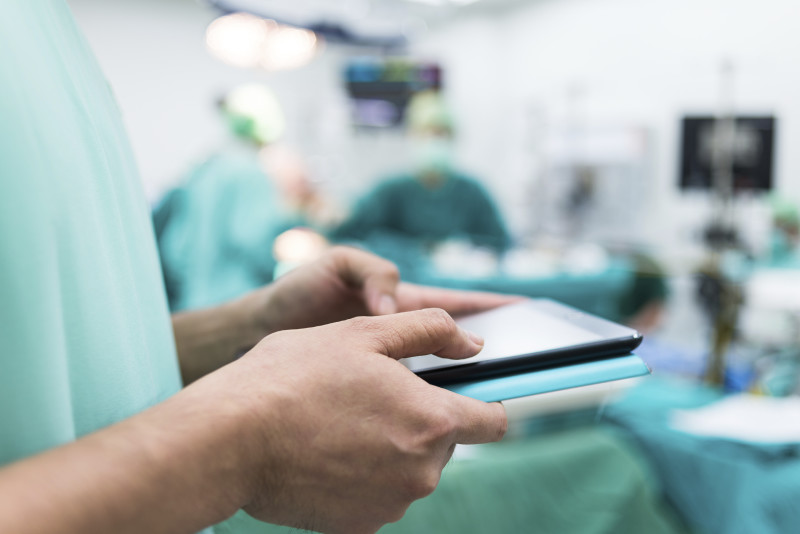It’s an issue they say has gotten little attention until recently. No federal regulations or industry-wide quality measures address phone use in health-care settings in general or in the O.R. specifically. And no group tracks whether hospitals have adopted rules for cellphone use.
But as people become increasingly glued to their phones, the lack of guidance could have big consequences.
Diagnosing the problem is easy, said Prof. Peter Papadakos at the University of Rochester Medical Center, who has written extensively on the subject. “Once we get into or start using our cellphones, we separate ourselves from the reality of where we are,” he said. “It’s self-evident: If you’re staring at a phone, you’re not staring at the monitors.”
This reality attracted national attention last year, when a doctor at Manhattan’s Yorkville Endoscopy clinic snapped cellphone pictures during an operation on comedian Joan Rivers, according to a federal investigation. The surgery, a throat procedure, went awry — an outcome the investigation didn’t directly link to the doctor’s phone use — and ended up cutting off Rivers’s oxygen supply. She went into cardiac arrest and died Sept. 4.
“It’s very important that the surgical teams be concentrating on the patient during the surgical event,” said Ramona Conner, editor-in-chief of the practice guidelines for the Association of Perioperative Nurses.
In 2012, the ECRI Institute, a nonprofit that focuses on health-care quality, listed cellphone distraction among the top 10 risks that technology could pose to patient safety.
Because people can check their phones for both personal information and work-related material, it’s easy for the devices to distract providers, said U.C. San Francisco professor Prof. Bob Wachter, who is also an expert in patient safety.
“It’s not that different from texting and driving,” he said. “There are supposed to be no distractions.”
Bringing one’s phone into the O.R. is common, Conner said.
Some hospitals have attempted to address the issue. The University of Rochester Medical Center requires staff to keep phones silenced when working with patients and forbids using phones for personal matters while at any “clinical work stations,” not just operating rooms.
Specific enforceable directives for the O.R. aren’t commonplace, but “more and more hospitals are playing catch-up” in developing policies, said cardiologist Chandan Devireddy, an associate professor of medicine at Emory University.
He oversees a catheterization laboratory — where patients undergo cardiac procedures – and enforces a rule that staffers cannot check e-mail or browse the Internet during cases. At least once a year, his department discusses social media and appropriate cellphone use.
But some doctors, nurses and other O.R. personnel point out that smartphones can provide assistance during care, letting staffers view patient information and lab results on the fly or communicate with colleagues in other parts of the hospital during a surgery.
But it’s hard to know if medical personnel are instead scanning Amazon or Facebook, “unless you’re videotaping or monitoring all persons at any time of the day,” Devireddy said.
For example, Burney, the orthopedic surgeon in Albuquerque, said his workplace, an ambulatory surgical center, forbids cellphone use in the operating room, but “it is a policy that is routinely violated.” He said that he hasn’t seen any injuries caused by cellphone use at his facility and that lab leaders discipline repeat offenders.
It’s the mix of pros and cons that complicates efforts to develop clear-cut guidelines.
“We don’t want to throw out the baby with the bathwater,” Conner said. “We want to be able to take advantage of this wonderful technology.”
“Our ability to address patient-care issues is much faster,” agreed Devireddy. “The idea of eliminating mobile phones is, I think, a very restrictive one.” Instead, he and Conner said, hospitals need to find a way to hold onto the benefits while keeping staffers from getting distracted.
Hospital policymakers frequently ask about the best way to regulate phone use, said Paul Anderson, ECRI’s editorial director of patient safety risk and quality, who often lectures on patient safety. The most effective course, he added, is to create a culture that discourages inappropriate distractions.
